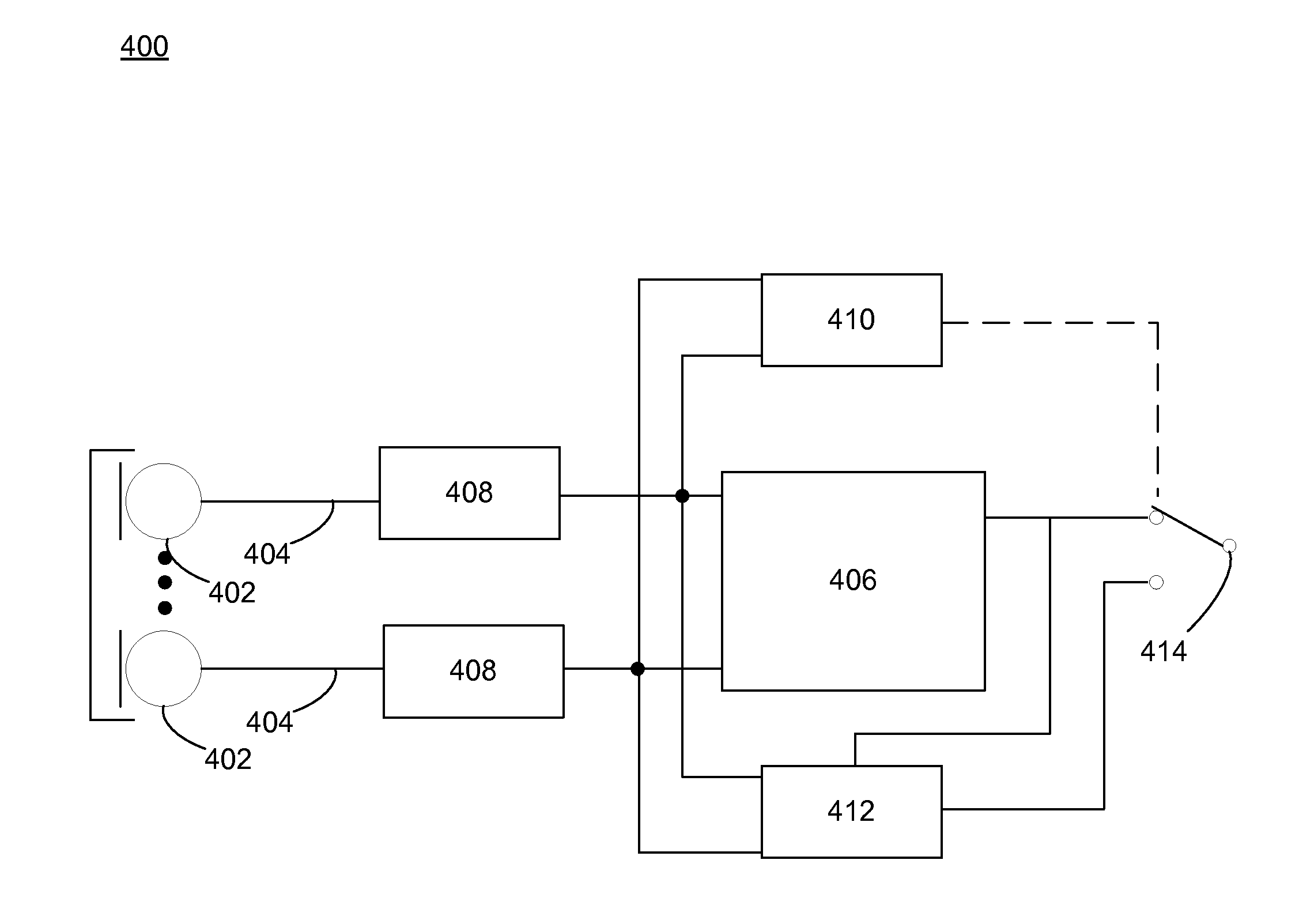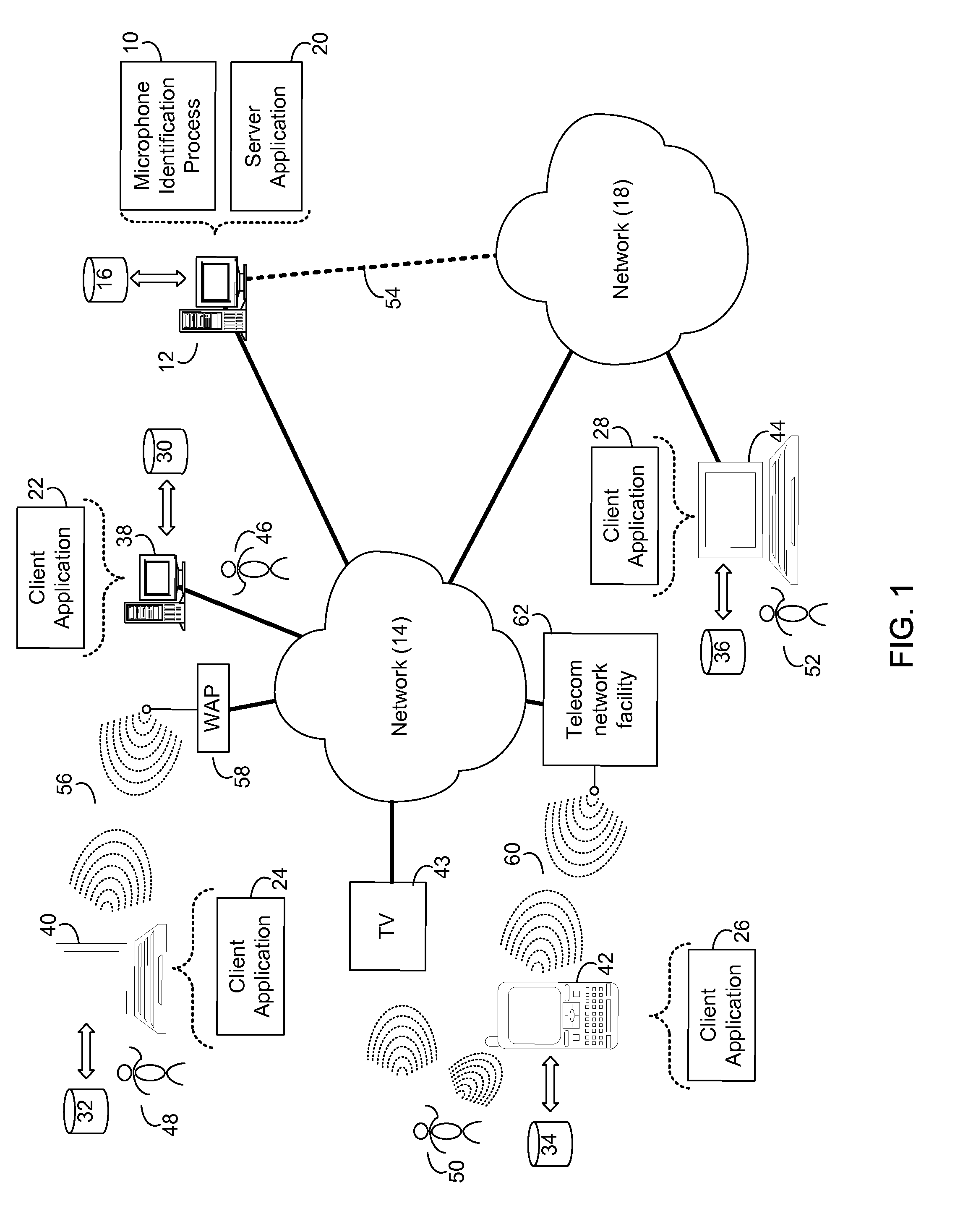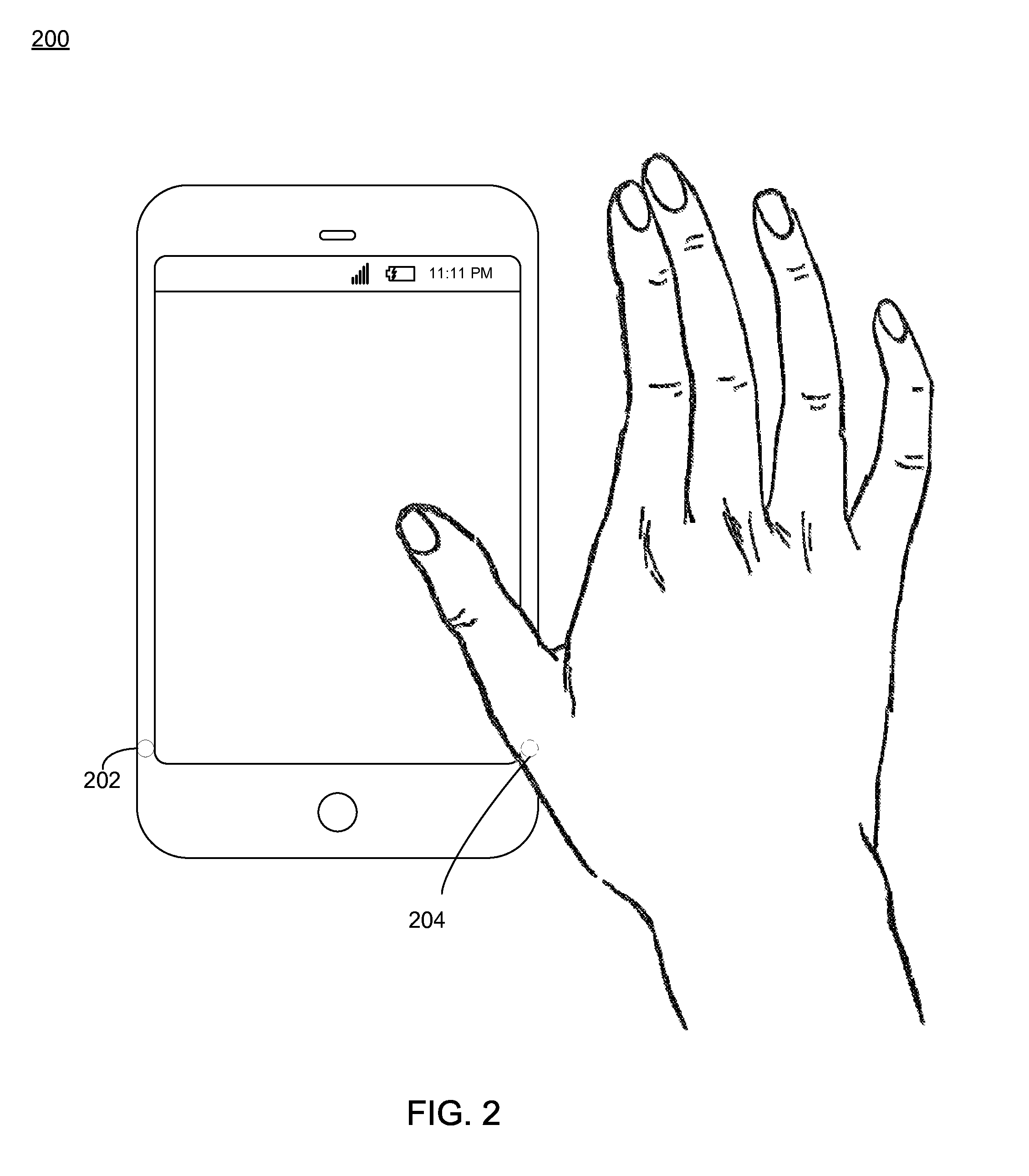System and method for identifying suboptimal microphone performance
a microphone performance and suboptimal technology, applied in the field of signal processing systems, can solve the problems of microphone fabrication process, non-uniform characteristics of microphones used in signal processing systems, and inability to meet the needs of instrumentation,
- Summary
- Abstract
- Description
- Claims
- Application Information
AI Technical Summary
Benefits of technology
Problems solved by technology
Method used
Image
Examples
Embodiment Construction
[0023]Embodiments provided herein are directed towards a microphone identification process 10 configured to detect an obstructed microphone in a multi-channel speech enhancement system. In the case of multi-channel speech enhancement a beamforming approach is commonly used. Here, the system may produce a poor output signal or fail completely if a microphone is covered, e.g., by the hand of the user. As expected, this risk increases at small hand-held devices like tablet-computers or mobile phones. If a covered microphone is detected the signal processing may be adjusted to achieve an enhanced output signal also in these critical situations.
[0024]In this way, if one microphone within a beamforming system is covered, e.g., by the hand of a user, the spatial filtering may not work correctly anymore and the output signal is not enhanced but rather impaired. This may be particularly true for adaptive beamforming as signal cancellation may occur and the desired speech signal is strongly a...
PUM
 Login to View More
Login to View More Abstract
Description
Claims
Application Information
 Login to View More
Login to View More - R&D
- Intellectual Property
- Life Sciences
- Materials
- Tech Scout
- Unparalleled Data Quality
- Higher Quality Content
- 60% Fewer Hallucinations
Browse by: Latest US Patents, China's latest patents, Technical Efficacy Thesaurus, Application Domain, Technology Topic, Popular Technical Reports.
© 2025 PatSnap. All rights reserved.Legal|Privacy policy|Modern Slavery Act Transparency Statement|Sitemap|About US| Contact US: help@patsnap.com



